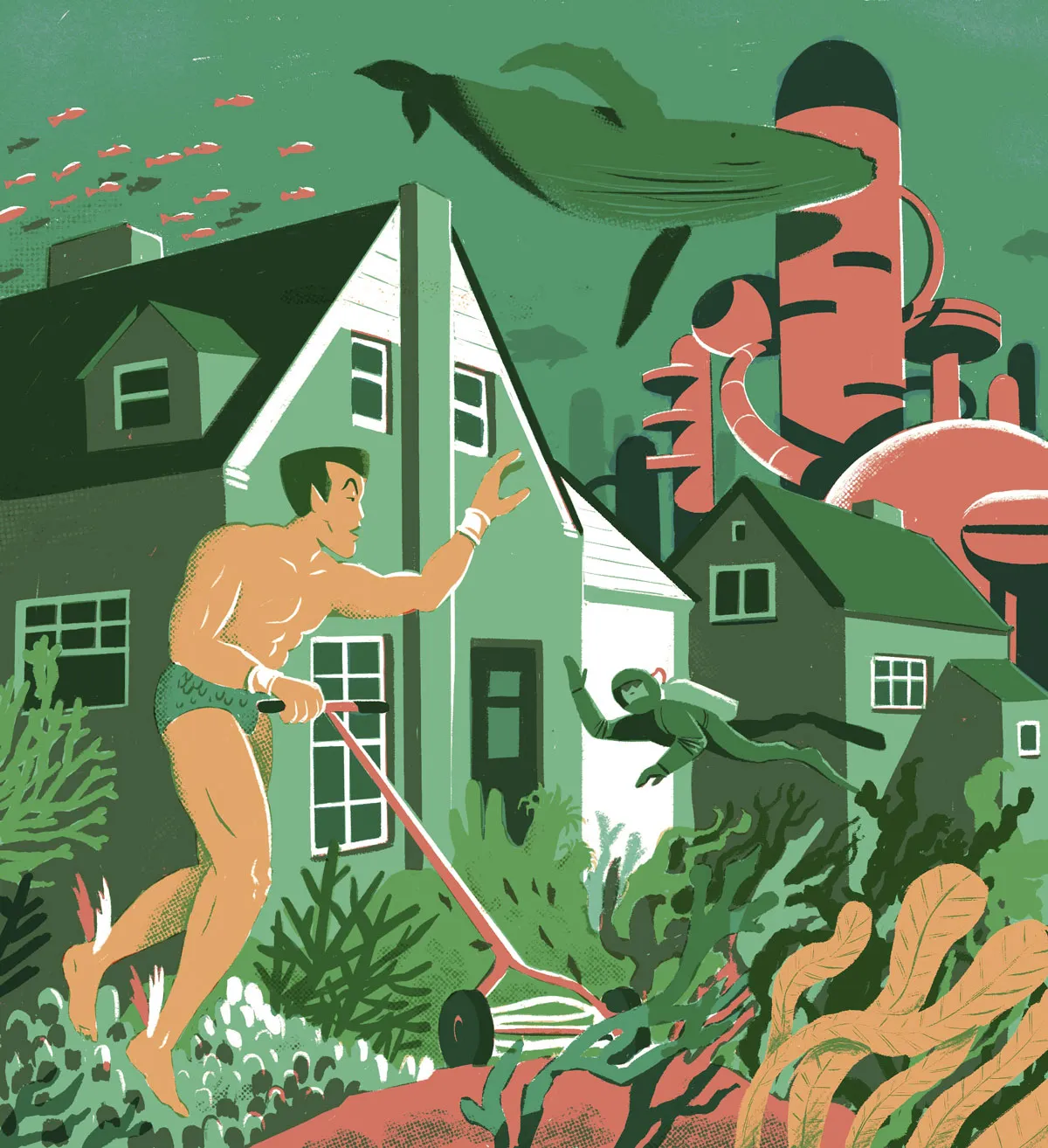The Black Panther movie Wakanda Forever introduces a villain called Namor, a character mainly known for living underwater and ruling the mythical kingdom of Atlantis. Let’s ignore the breathing underwater part, and the bit where Atlantis is real, and focus on the fact that Namor’s people live in a city deep under the ocean. According to Philip Pauley, a futurist who specialises in promoting the potential of underwater cities, the idea isn’t as far-fetched as it sounds.
“The most notable pioneer of underwater habitation was Jacques Cousteau,” he says. “He built a number of underwater habitats in the 1970s. These tended to be quite small, but there’s nothing stopping us from building something bigger. It would just require time, money and resources.”
Pauley’s own design for an underwater community, which has attracted interest from film producers and NASA, consists of a central biosphere surrounded by eight smaller biospheres.
The dome design “seems obvious”, he says. “Water can move around it fairly easily. It can take the biggest amount of pressure. An alternative, more cost-effective shape would be a square, but it would depend on where you want to build your city. Having a current pushing against a flat surface is never a good idea.”
Location, adds Pauley, is crucial. A complex built near the surface benefits from easy access to supplies and would be easy to escape, if needed. “Building at a greater depth means more costly, heavy-duty materials,” he says.

That said, building a structure deeper down does mean that intense water pressure could be used to generate electricity. “It’s one way to generate sustainable energy,” he says. “A small nuclear reactor is another. You could use surface wave motion, or solar power, or wind turbines. You could use a range of renewables.”
Similarly, there are many options for food. “You could take livestock and chickens on board or farm fish,” says Pauley. “You could grow meat, become totally vegan or get food brought in.” Oxygen, meanwhile, can easily be made from the surrounding water or extracted from the surface.
But Pauley concedes that living deep underwater for long periods may prove psychologically challenging. “There’s the issue of isolation,” he says. “For mental health, you need sunlight and vitamin D. You can replicate daylight with LED lights but this is another reason to build close to the surface – so people don’t feel so cut off from the world.”
Pauley sees underwater cities as a way to solve potential issues such as overpopulation, or to provide us with an option in case of a doomsday scenario. “It makes more economic and environmental sense than setting up a colony on Mars, but that’s where a lot of the money is going.”
Why is that? Pauley’s theory is that the ocean is more politicised than space. “It’s got so many interested parties: governments, mining and cabling companies, the military, the oil industry. There’s a lot going on down there, and they don’t want anyone monitoring them!” Or maybe they really have found Atlantis.
Verdict: We could build underwater cities! The problem is, entrepreneurs are too preoccupied with sending us to Mars.
- This article first appeared inissue 384ofBBC Science Focus Magazine–find out how to subscribe here
About our expert: Phil Pauley
Pauley is an acclaimed futurist who has designed floating solar farms, underwater vehicles for deep-sea tourism, and the self-sustaining Sub-Biosphere 2 underwater base. He is also the founder of immersive technology software consultancy PAULEY.
Read more about underwater living: